GRISEUM Praeger, 1917
Type : not indicated.
Distribution : Mexico (in the Michoacan Volcanic Region of the Trans-Mexican Volcanic Belt and also on the Central Mexican Plateau in the state of Guanajuato, in Querétaro and possibly also in Jalisco).
Description (by 't Hart & Bleij in Illustrated Handbook of Succulent Plants, 2003) :
Perennial subshrubs with erect (or procumbent) much-branched stems with flaking bark and papillose twigs.
Leaves crowded, alternate, linear or lanceolate-linear, obtuse, sessile, (sub-)terete, finely papillose, sometimes sparingly hirtellous dorsally, often subglaucous, green, 5.9 – 28 x 1.7 – 3.2 mm, flowering branches erect or ascending.
Inflorescences cymes with 1 to many branches, pedicels to 3 mm.
Flowers 5-merous (rarely 6-merous or with 2 petals fused and thus 4-merous), sepals basally free, shortly spurred, unequal, lanceolate, ovate or lanceolate-oblong, obtuse or acute, pale green, 2.4 – 8.1 x 0.9 – 2.2 mm, erect ; petals basally connate, lanceolate, obtuse or acute, mucronate, sometimes slightly hooded, carinate, whitish, ± 7 mm, spreading to slightly recurved, anthers yellow.
Cytology : 2n = 52, 60
Note :
Uhl wrote (Rhodora 82, 1980) : “Sedum griseum Praeger, as here reported, consists of two morphological and cytological forms. Populations from Guanajuato, and possibly also from Querétaro, have grayish, glaucous leaves and n = 26. Plants from farther south, in Jalisco and Michoacan, are greener and differ in other characters and all have n = 30. The type collection originated in Mexico without further information as to locality, but Clausen (1959) considered that a cultivated plant like those reported here from Guanajuato with n = 26 was a closer match for the type than those from farther south. However, he concluded from his morphological studies that both forms should be kept in the same species, possibly as separate subspecies. The consistent difference in chromosome numbers, with no intermediate numbers known, and also the disjunct distributions indicate that a significant separation into at least incipient species has occurred between these two. Possibly a reexamination of their morphological differences might justify their recognition as separate species. Sedum griseum is most likely to be confused with S. bourgaei (Clausen 1959), but the latter species consistently has n = 29.”
In habitat in Jalisco :
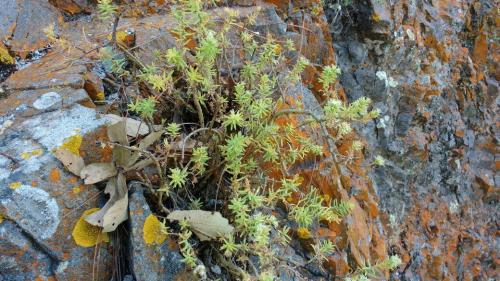
.jpg)
Photos Gerhard Köhres
In cultivation :
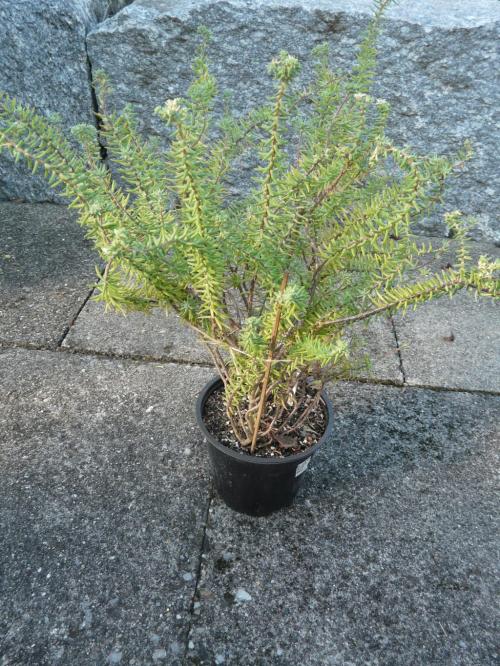
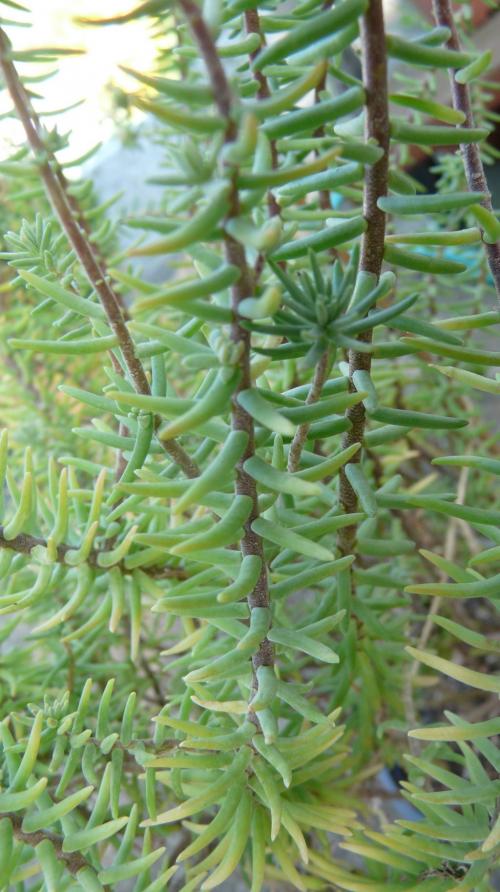
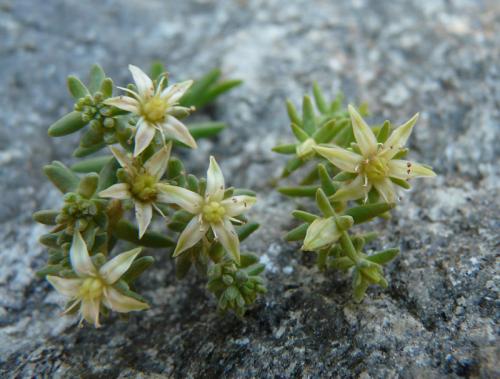
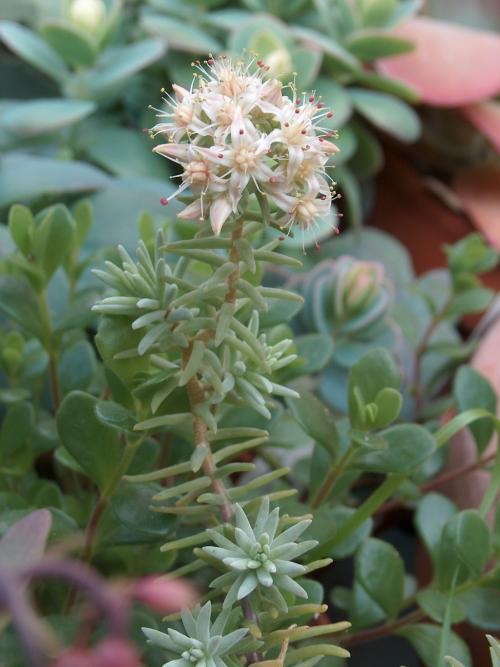
Photo Eric Barbier
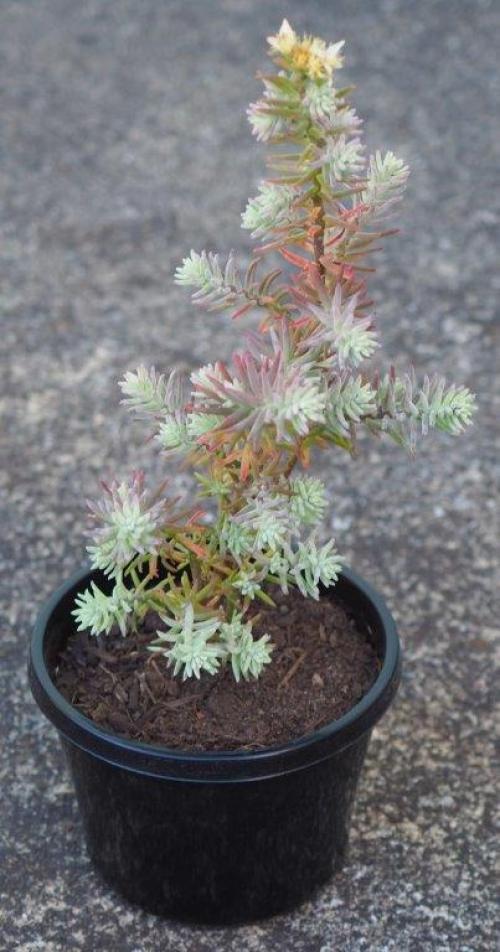
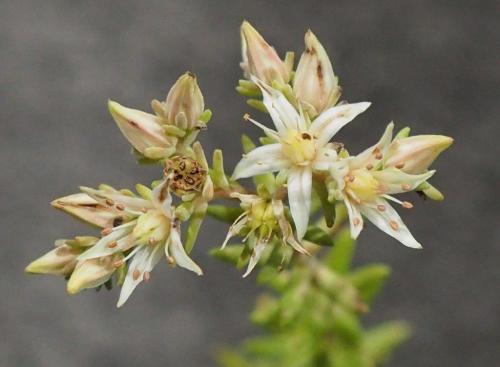
Photos Santino Rischitelli